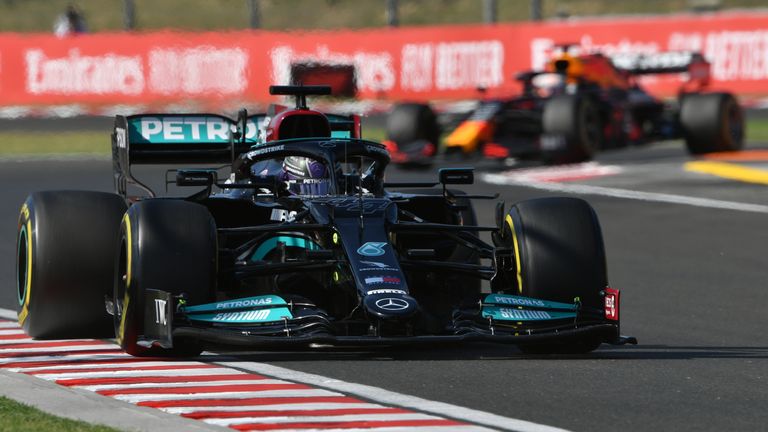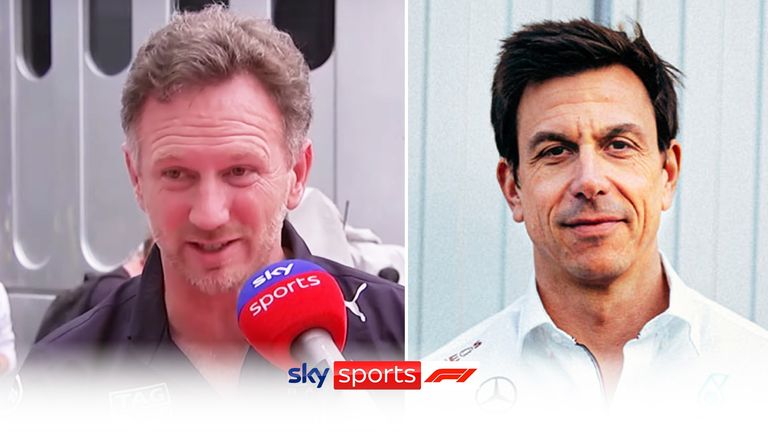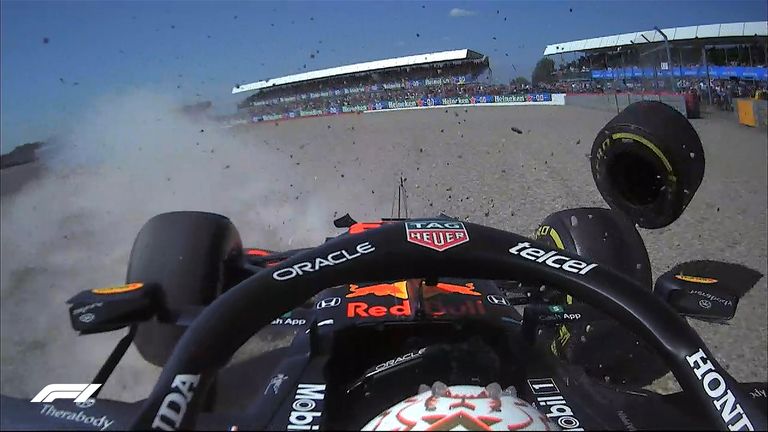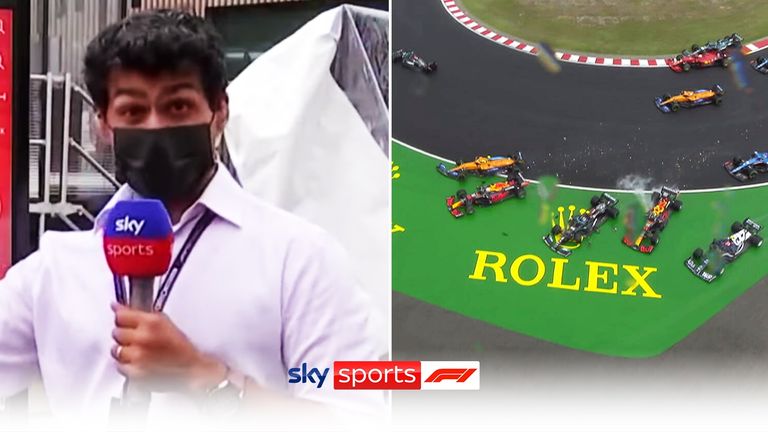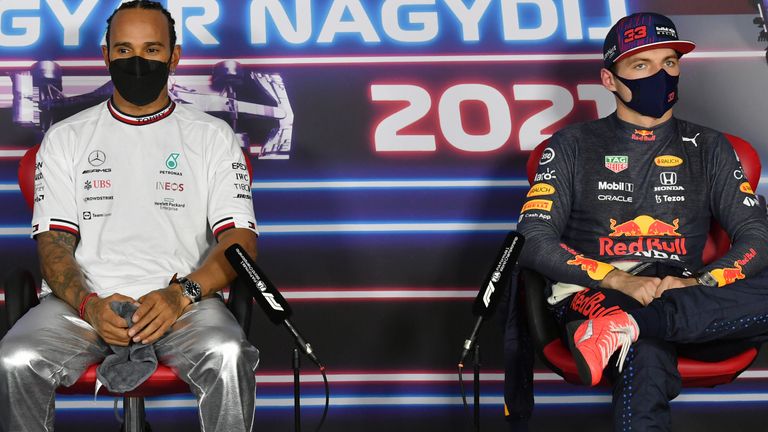Mercedes vs Red Bull: Who’s really ahead? Previewing vital Belgian GP battle after F1’s summer cliffhanger
Like the end of a soap opera episode, the championship contest stopped for its summer break just at its most intriguing moment and left us desperately wanting to find out what happens next.
Had Mercedes really regained the upper hand just after it had seemed that Red Bull had established unstoppable momentum in the five consecutive races between Monaco and France?
In those races, just before the British and Hungarian grands prix completed the first half-season, Max Verstappen appeared to be enjoying a growing advantage as his RB16B proved to be extremely responsive to the team’s aggressive development programme.
- Max Verstappen’s big test as ‘epic’ Lewis Hamilton fight resumes
- When to watch the Belgian GP on Sky Sports F1
Mercedes, meanwhile, having said there was very little further potential left in its W12 and that it was switching its tunnel programme fully to the 2022 car, turned up at Silverstone with the last of the tunnel’s ’21 upgrades. Lewis Hamilton promptly went fastest in qualifying at both Silverstone and the Hungaroring, retaking the lead of the championship into the bargain.
Looking ahead to the season’s second half, which begins at Spa this weekend, has Mercedes really regained the competitive initiative or did the outcome of the last two races lead to something of a false narrative? This weekend is when we begin to find out.
Did the Silverstone upgrade put Mercedes ahead?
The Mercedes Silverstone upgrade was fairly extensive, encompassing changes to the floor, barge boards and the area around the rear brake ‘cake tins’. In the three races prior to that the Red Bull had enjoyed a constant stream of new parts including diffuser and front wing changes and in the Austrian Grand Prix Verstappen’s pole time was 0.3s clear of Hamilton’s Mercedes around a fairly short lap. Verstappen’s victory there was the fifth in succession for Red Bull.
So Hamilton being fastest in Friday qualifying two weeks later was a very strong turnaround, which inevitably led to assumptions that the Mercedes upgrade had been highly effective, a logic that was only strengthened when Hamilton was 0.4s faster than Verstappen around the Hungaroring.
But there are a few caveats we need to be aware of before assuming too much. Silverstone’s layout naturally suits a low-rake, low-drag concept of car such as the Mercedes – and even then it was only barely faster in qualifying than a Red Bull which was not switching its front tyres on as the track cooled. In the following day’s sprint race, the Red Bull appeared to be faster.
So even at a circuit which might be expected to suit it, the Mercedes was not decisively faster. Its superiority in Hungary was surprising, though. But there the Red Bull was a long way out of its sweet spot, with Verstappen suffering big balance problems throughout the weekend.
So we are left with a high probability that the Merc upgrades have added performance to the car, but not to the extent suggested by the last two races, neither of which saw the Red Bull at its best.
Have the new-spec tyres helped Mercedes?
The tougher rear tyres introduced by Pirelli in the wake of the Baku blow-outs were used for the first time at Silverstone. Coinciding with the Mercedes resurgence. But does correlation equal causation in this case?
The tyres are of a tougher construction which should allow Pirelli not to have to stipulate the minimum pressure increases that would otherwise have been necessary. But they behave in much the same way as before. Neither teams nor drivers are reporting any significant change in how they feel and respond.
Pirelli is not expecting a significant rear grip increase from the changes and as such it would seem unlikely to be the explanation behind the Red Bull’s severe understeer problems in Hungary.
Is it all down to power unit developments?
There was much mutual puzzlement at how the straightline performance comparison of the two cars changed between the France/Austria sequence of races (where the Red Bull was faster down the straights) and Silverstone (where it was slower).
Honda introduced fresh power units in the Red Bulls at France, with a reliability upgrade believed to be around the turbo. Mercedes has wondered out loud if between Austria and Silverstone Honda had been pegged back by the FIA and if so, why? Honda took great exception to this and insists its power units were of exactly the same spec and used within the same parameters and that the difference in straightline speeds is purely to do with the respective wing choices of Red Bull and Mercedes at the very different tracks. Certainly, there have been no power unit technical directives issued by the FIA in the period concerned.
Red Bull’s Helmut Marko has, in turn, suggested that Mercedes made horsepower gains between Austria and Silverstone thanks to a new cooling system, a suggestion that Mercedes has rubbished.
Who knows where the reality lies? Vital clues will be forthcoming in the next episode, from Spa.
Source: Read Full Article
